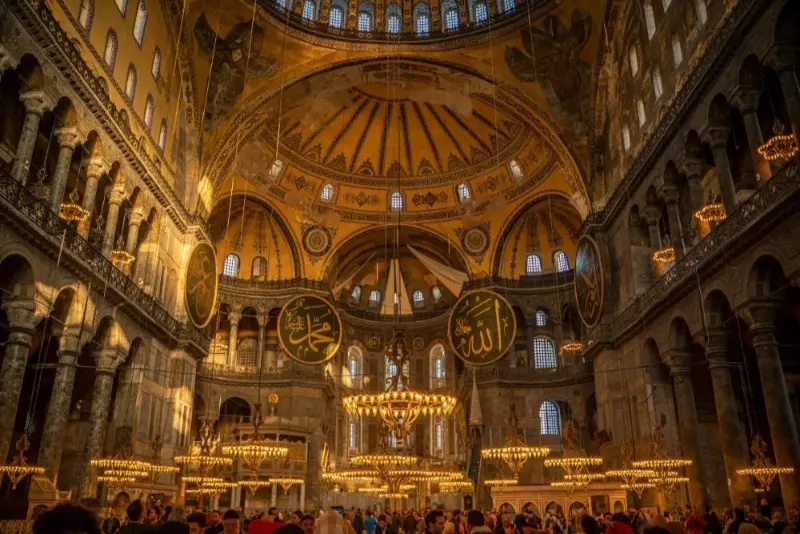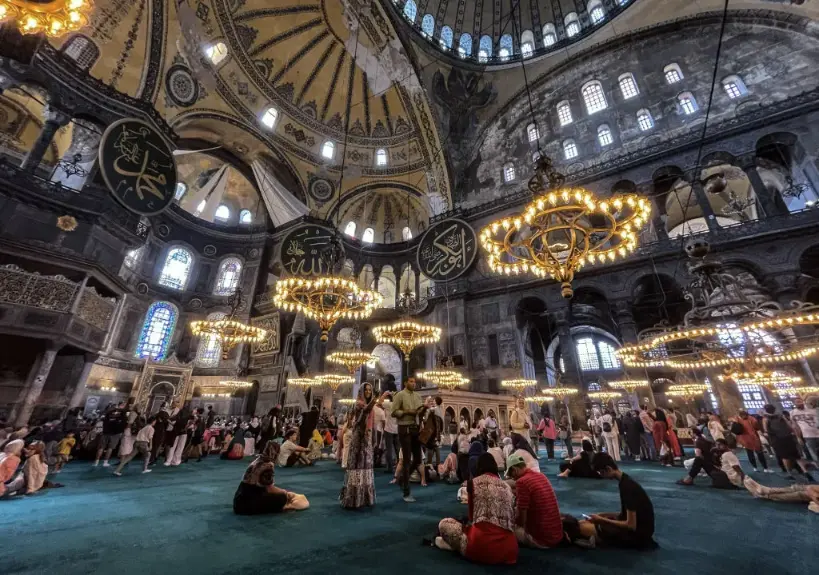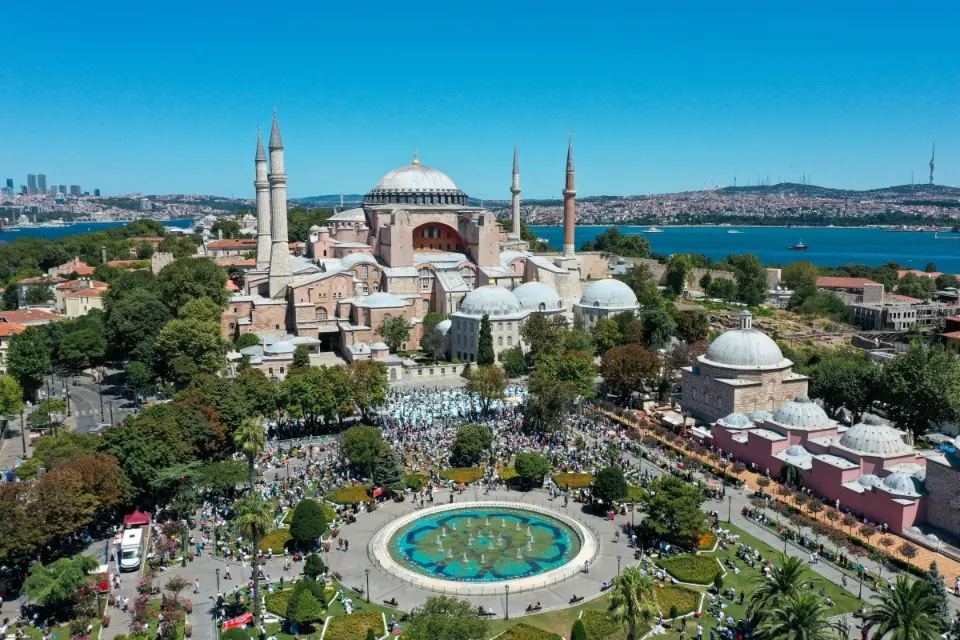Containing two areas,Byzantine Istanbul is renowned for its ironic antiquity and artistic heritage. Known as Byzantium and later Constantinople, the Byzantine period marks one of the most vital periods in Istanbul’s history. A timeless masterpiece of Byzantine construction,
The History of Hagia Sophia
Hagia Sophia‘s Greek term is “holy wisdom.” Built under the reign of Emperor Justinian I in 537 AD, for almost a thousand years, it was the principal church within the Byzantine Empire. Hagia Sophia’s past is full of events, including its transformation into a mosque following the Ottoman takeover in 1453.

Structural Analysis of Hagia Sophia
The structural system can be understood as a primary system assisted by several secondary systems. Hagia Sophia’s structural layout is a technical wonder. The construction stands out mainly for its use of Pendentives, which are triangular portions of brickwork that transfer the dome’s weight to the supporting pillars. Such creative methods enabled Hagia Sophia to be a revolutionary building in Byzantine Istanbul.
Hagia Sophia Timeline
Understanding the timeline of Hagia Sophia provides insight into its historical significance:
360 AD: Emperor Constantius II constructed the first church on the site, Megale Ekklesia,
415 AD: Following the destruction of the original church in a disturbance, another one was built.
1935 AD: The Republic of Turkey turned it over to a museum
Byzantine Istanbul: Key Parts of Hagia Sophia
Hagia Sophia consists of numerous fundamental elements that support its architectural grandeur:

The Nave: The enormous dome covers the middle section of the cathedral.
The Narthex: A large entry hall extends into the nave.
The Apse: The altar is housed in a semi-circular recess at the eastern end of the church.
The Minarets: Added during the Ottoman era, these soaring towers serve as the call to prayer platform.
Exterior Description of Hagia Sophia
Hagia Sophia (Disambiguation), List of Churches Dedicated to Holy Wisdom.. Hagia Sophia’s great dome and four minarets define its outside. Built mostly of brick and stone, the structure has a front reflecting a mix of Byzantine and Ottoman architectural forms. The big buttresses built during the Ottoman era provided the construction more support and guaranteed stability throughout the ages. Compared to the inside, which has mosaics and marble, the outside is somewhat simple.
Architecture Plan of Hagia Sophia
With a diameter of 31 meters, the dome appears to float above the building and is supported by a series of pendentives and squinches Hagia Sophia’s architectural scheme combines a central plan with a basilica, a fresh innovation in Byzantine building. Two semi-domes flank the primary dome, therefore generating a large open area within. Emphasizing its majesty and inspiring wonder, the building’s design lets one see the dome from the nave uninterrupted. Byzantine architecture was greatly influenced by this creative concept, which is seen in many later churches all across the Byzantine realm.
Interesting Facts About Hagia Sophia( Byzantine Istanbul)
This fascinating information about Hagia Sophia emphasizes its importance in Byzantine Istanbul:
❖ For more than an era, Hagia Sophia held the name of the principal cathedral in the world up until the conclusion of Seville Cathedral in 1520.
❖ Hagia Sophia’s supple structure has facilitated it to battle numerous earthquakes.
❖ Reflecting its diverse past, the construction has housed a mosque, a church, and a museum.
❖ Reflecting its diverse past, the construction has housed a mosque, a church, and a museum.
AP Art History of Hagia Sophia
Due to its architectural creativity and ancient significance, Hagia Sophia is a key study topic in AP Art History. Showcasing the change from Roman building approaches to the more complex and attractive style of the Byzantines, the construction is a standard example of Byzantine creation. Students of Hagia Sophia observe its building, architectural representation, and belongings in Islamic and Christian art.
Beyond Hagia Sophia: Other Byzantine Wonders in Istanbul
Hagia Sophia, still Istanbul’s most eminent Byzantine building, is not the only famous structure worth viewing; others include:
Chora Church: Chora Church is a wonderful diagram of Byzantine art, and I am familiar with its flawlessly kept mosaics and paintings.
Theodosius Walls: These self-protective walls, a tribute to Byzantine military construction, sheltered the city for centuries.
Basilica Cistern: Made under Ruler Justinian I’s rule, an alternative pool displaying Byzantine architectural expertise highlights their mechanical capability.
The Hippodrome of Constantinople: Initially the most important point of Byzantine Istanbul’s social life, the Hippodrome introduced public events such as chariot races.
Conclusion
Finding Istanbul’s Byzantine beauty offers a view into a significant era of city history. This research revolves mostly around Hagia Sophia, a monument to Byzantine ingenuity and cultural mixing. Visiting Hagia Sophia and other Byzantine sites in Istanbul helps one value the city’s rich past and part in building Eastern and Western civilizations.

